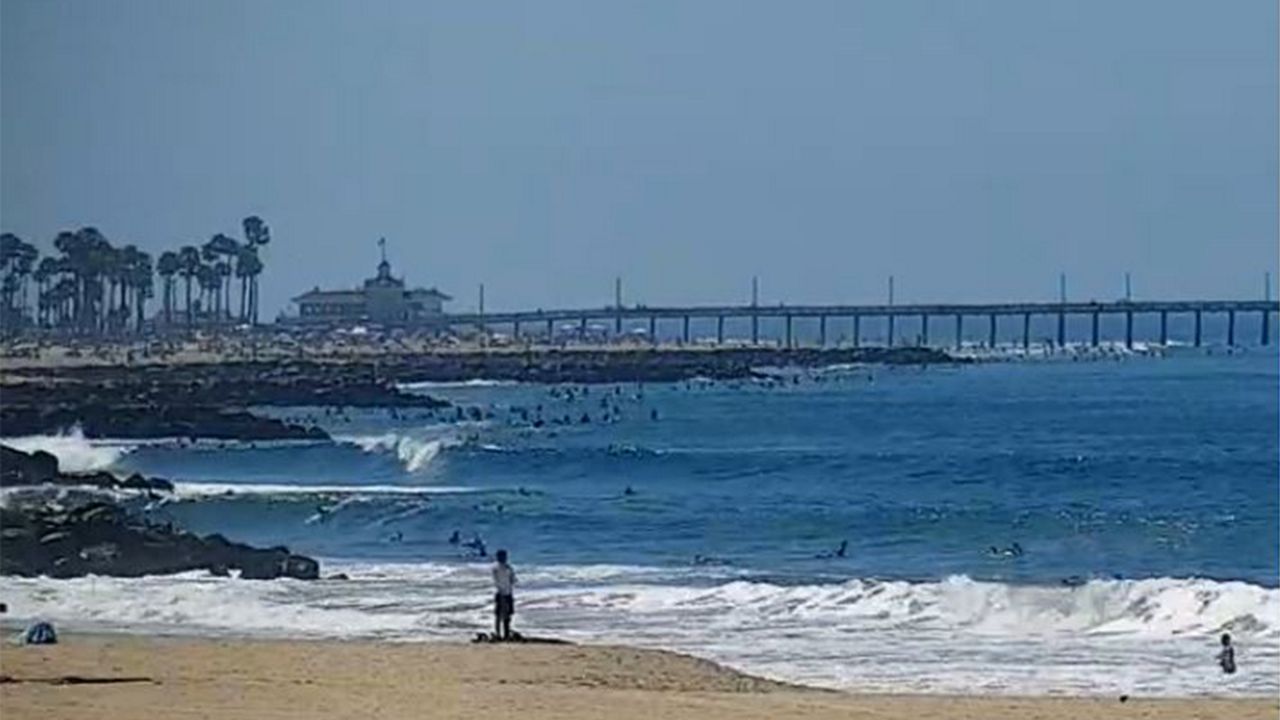Recently I bought myself and daughters new wetsuits. You might ask, why is that necessary going into the summer in sunny Southern California? Well, if you have been to the beach in the summer in SoCal, you definitely noticed that there is a chill in the water.
In fact, millions of people come to Southern California to enjoy the warm sunny beaches, only to be surprised by the chilly water temps at the beach. This is especially true if you are comparing the ocean temps to places on the East Coast at the same latitude. SoCal ocean water temps peak in the upper 60s and low 70s in August and September. The rest of the year water temps are in the upper 50s and low 60s. Brrrr! Ocean temps are as much as ten degrees cooler compared to locations on the East Coast at the same latitude in summer!
There are two general reasons as to why the water temps are much colder on the West Coast compared to the East Coast. The first reason is because of the California cold current that runs along the coast from Canada to Central America. The second reason is upwelling.
There are surface ocean currents in all of the Earth’s oceans. In the northern hemisphere these currents form gyres that flow in a clock-wise direction. In the southern hemisphere oceans, they flow in a counter-clockwise direction. These currents are driven by winds at the Earth’s surface where the atmosphere meets the ocean.
Over the Eastern Pacific, high pressure dominates most of the year. As you probably know, air moves around high pressure in a clockwise direction. This creates a northerly (from the north) wind off the Southern California coast.
Where the air meets the ocean, friction causes “drag” on the surface water which moves the water in the same direction as the wind. So, the end result is that you get a current that transports water from the frigid Gulf of Alaska toward the Equator. Along the way this current passes Southern California. This is called the California cold current. On the East Coast, water moves in the opposite direction, or from the Gulf of Mexico and Caribbean Sea toward Canada and eventually to Northern Europe. Water temps in the Gulf of Mexico peak in the upper 80s and low 90s.
The second reason SoCal has such cool ocean temperatures is because of “upwelling.” Upwelling is the process of bringing deep ocean water to the surface. Upwelling is caused by two factors. The first is related to the aforementioned winds off California. The steady northerly winds move ocean water southward. When the surface water is moved horizontally there is a void where the water used to be. This void is replaced in a vertical direction from the deep ocean along the California coast.
The deep, cold ocean water is “upwelled” to the surface.
Another factor that drives the upwelling process is the Coriolis effect. The Coriolis effect is due to the rotation of the Earth. The Coriolis effect moves objects to the right of their intended path. So, as the winds blow from north to south, the ocean surface water has a tendency to move to the right, or away from the shore. Again, there is a void because of the horizontal movement at the surface where the water originates. This void is filled from the deep oceans along the California coast.
So, the next time you head to the beach in SoCal be prepared for a chill, or bring a wetsuit!



